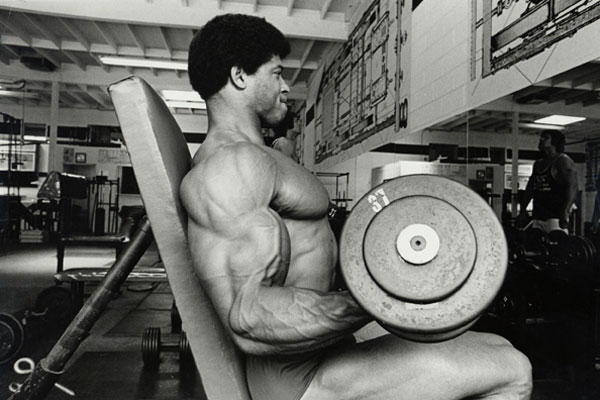While I sit here typing up this week's blog on abs and obliques, I cannot help but think about this scene from Crazy. Stupid. Love. in which Emma Stone's character sums up the situation pretty much spot-on.
The easy thing to say to a well-defined mid-section is one of two things:
Option A: "Damn! Looking great!"
Option B: "Genetics. Must starve themselves. No thank you."
While it is indeed envious to see somebody with a well-defined set of abs and obliques, there is little reason to be a hater. It takes a blend of hard training, sound nutrition, and genetics to make them a possibility.
We are talking about obliques and abs today in Not-So-Gross Anatomy. Beyond the quick anatomy lesson and exercises I want everyone who reads this to think a bit about how this can apply to their own training. Obsession is just a focused form of crazy and without the right eating and training (and genetics) - finding those six-pack abs may be as likely as a unicorn delivering your pizza to you right now.
My point is to gather some perspective. Train hard. Eat right. Sleep well. Balance stress.....enjoy the development.
(stepping of the soapbox)
Let's look at anatomy. Think of the musculature resting on three layers - deep middle and superficial. The transverse abdominis is located deep and secures around the midsection. The muscle fibers run horizontally and the transverse originates along the illiac crest, to costal cartilage of ribs 7-12, the thoracolumbar fascia, and the lateral half of the inguinal ligament. The "TA" inserts into the xiphoid process, the linea alba, and the pubic crest.
I will translate into laymen's terms. It wraps around your midsection from the back around to the front and connects from sternum to pubic bone. It is the deepest muscle that we are talking about today. It's the spare tire that helps brace the midsection and spine when bracing or "bearing down"
Notice the striations of the muscle fibers as the TA wraps the body from posterior to anterior. (Custom Pilates and Yoga)
On the middle layer of the abs & obliques is where you will find the rectus abdominis and the internal oblique. The rectus abdominis is what you may call the six pack, eight pack, the washboard abs, or in many cases the "well-upholstered" abs. Even if you cannot see them, they are in there (I promise). What gives the compartmental look is the linea alba and tendons that intersect along the rectus abdominis. Originating at the pubic symphosis and inserting along the 5th-7th ribs and the xiphoid process of the sternum. The rectus abdominus flexes the lumbar spine.
The internal oblique is part of the "love handles". Its colleague is the external obliques and they form an anatomical weave to help the torso rotate and laterally flex. The internal obliques originate along the illiac crest and insert along the costal cartilage of the 8th-12th ribs and also the pubic crest. From the anatomical point of view, the internal obliques look like they are moving from posterior to anterior and fanning upward and down.
On the superficial layer, the external oblique resides. Originating along the anterolateral border of the lower 8 ribs (antero = front lateral = side) and inserting at the illiac crest, the pubic crest, and the font of the rectus sheath.
The arrow depicts the external oblique (right side shown)
Injuries can happen with these muscles and the most common injuries are oblique strains, sports hernias, and a condition called diastasis recti.
Oblique strains can happen from something as minor as twisting suddenly or can be more chronic in nature from repetitive motion (a throwing motion). The can be quite painful and frustrating and should seek medical attention to minimize further damage.
Sports hernias, a different thing altogether from hernias. A sports hernia is a tearing in the abdominal wall or the adbominal sheath. This is usually generated through powerful movements and requires a decent amount of rest before getting back into normative activities.
Diastasis recti, is a condition in which the linea alba becomes stretched or torn to the point of "splitting" the rectus abdominis. This can happen to mothers after pregnancy or after rapid or substantial weight loss. The pressure along the rectus abdominis and linea alba causes fibrous tearing and in some cases this may require surgery. In some cases, this condition becomes the "new normal" and some exercise modification may be required.
So hear are some ideas for an apparently healthy individual for the abs and obliques this week. Programming is critical and the benefits of compound movements to build stronger abs and obliques is vital. These entries are for that "little something extra" to challenge the area.
As always, thanks to The Energy Club for some of the shots.
Individualized programming at our "one stop shop" can get you dialed in for any goal!
Until next week's conclusion of Not-So-Gross Anatomy - I'm outta here!
-Don Bahneman































































































